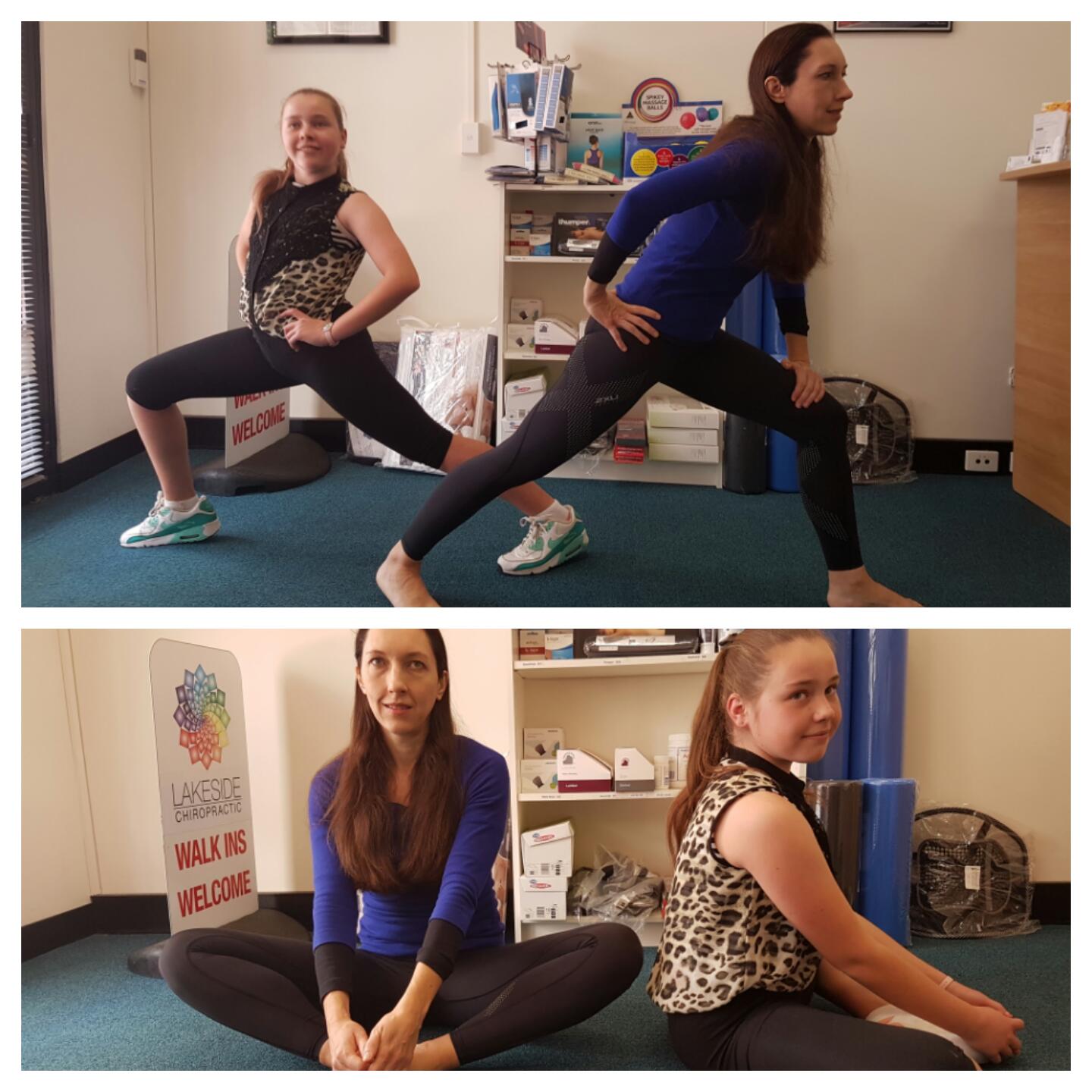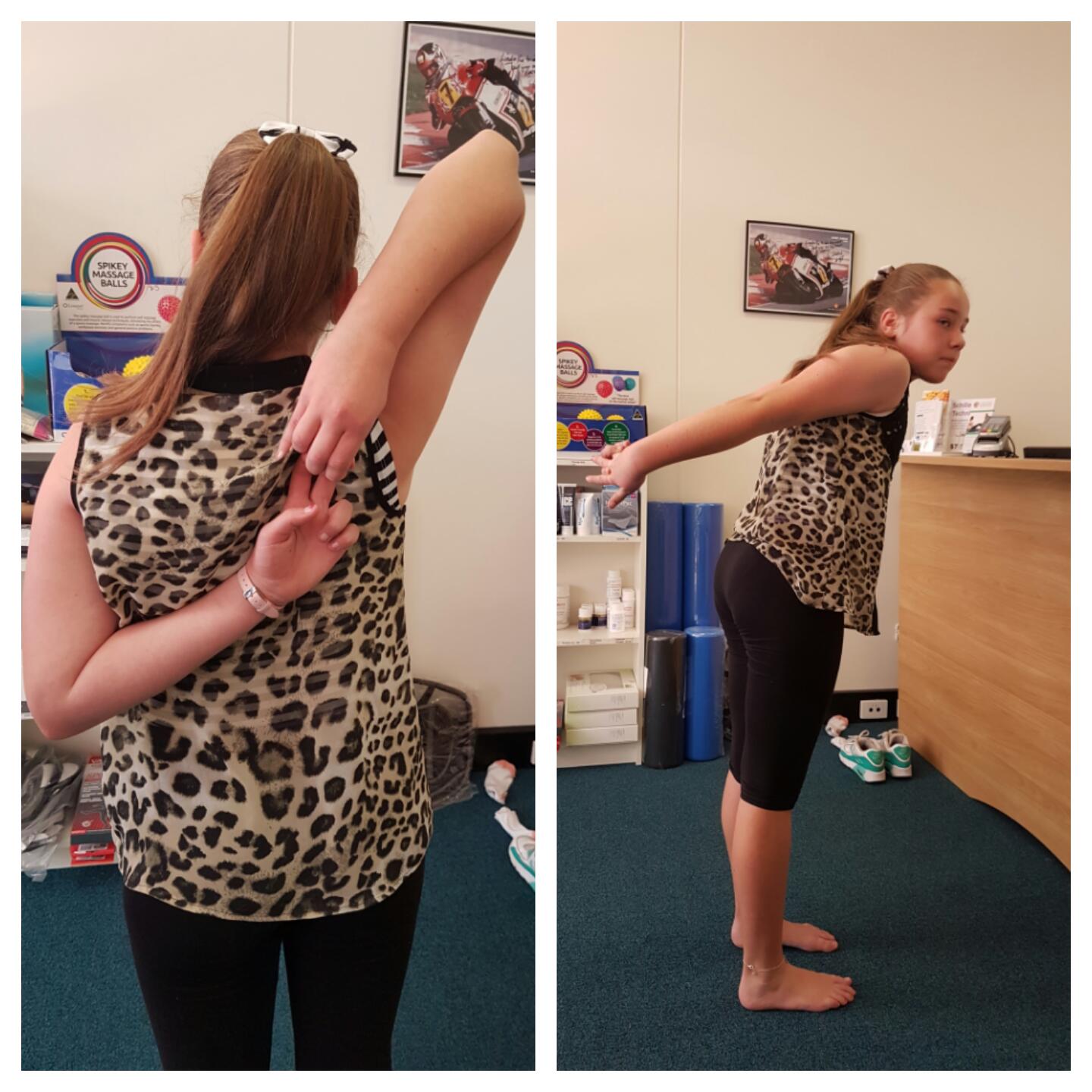What is static stretching?
 Static stretching is generally what people do when you think of stretching. It involves holding a position at your end range of motion for a prolonged period of time to let your muscle fibres lengthen and 'stretch.'
Static stretching is generally what people do when you think of stretching. It involves holding a position at your end range of motion for a prolonged period of time to let your muscle fibres lengthen and 'stretch.'
What is dynamic stretching?
Dynamic stretching is a momentum and movement based method of stretching our muscles. Instead of holding a position for a prolonged time without moving, you instead slowly stretch to your maximum range of motion, and then accelerate gently from there into the next movement. The stretch is therefore not held for a prolonged period, as compared to static stretching - you keep moving after reaching the end range.
Examples of dynamic stretching include twisting lunges, body squats, leg kicks, arm swings.
The important thing to note about both dynamic and static stretching is to keep yourself safe by not extending the range of motion past your body's limit. Always stop at the end range to prevent overstretching and tearing of muscle fibres.
What type of stretching should I do?
Evidence shows that before exercising, dynamic stretching is generally better for attaining strength. A 2005 study found that leg extension power after dynamic stretching was greatly increased compared to no stretching or static stretching. Another study in 2009 showed that dynamic stretching before vertical jumping lead to a significant increase in jump height.
Static stretching before exercise usually has little to no impact on strength performance. This does make sense when you consider that static stretching exists to stretch out contracted muscles back to their original lengths - if you haven't started exercise yet, then chances are that your muscles are not in a state of contraction. For example, after exercising your biceps, the muscle shortens and contracts. To get it back to its natural length, you would lay your arm out straight and hold it there, performing a static stretch.
However, a 2003 study in the Journal of Orthopaedic and Sports Physical Therapy demonstrated that static stretching for hamstrings before exercise can lead to a 'significant increase in hamstring length' for up to 24 hours. If you find that you tend to get tight hamstrings, then static stretching before and after exercise could be very beneficial.
How may Chiropractic Care help?
 It can be very tough to stretch out our backs. Unlike our limbs, the back muscles tend to be short and there are many joints and places for the muscles to attach to along the spine. At Lakeside Chiropractic we work on limbs and the spine. Here are some examples of how we may help:
It can be very tough to stretch out our backs. Unlike our limbs, the back muscles tend to be short and there are many joints and places for the muscles to attach to along the spine. At Lakeside Chiropractic we work on limbs and the spine. Here are some examples of how we may help:
- Chiropractic adjustments: releasing fixated joints and letting the hard-working muscles in your back ease off their tension.
- Electrotherapy: decreasing inflammation and stimulating muscle fibres to fatigue and release tension.
- Dry needling, soft tissue therapy including PIR (post-isometric relaxation) and trigger point therapy-
- Flexion distraction tables – This technique of Distraction can stretch tight Lower back muscles. Our chiropractic care centre has invested a great deal in acquiring these Flexion-Distraction tables.
If you are an athlete that wants to see how Chiropractic care in Perth can take your body further, check out our Sports Chiropractic blog; otherwise, don't wait and visit Lakeside Chiropractic in Joondalup- Perth now for a full assessment.
Lakeside Chiropractic is central to the northern suburbs of Perth located in the city of Joondalup. If you are in the surrounding suburbs such as Yanchep, Tapping, Carramar, Currambine, Wanneroo, Heathridge, Edgewater, Gnangara, Mullaloo, Padbury, Kingsley, Woodvale, Banksia Grove, or Duncraig please come and see our friendly and experienced chiropractors. They can further discuss the benefits of chiropractic for tight muscles.
You can contact us on 9300 0095, or visit our website www.lakesidechiro.com.au to make an enquiry or booking.



